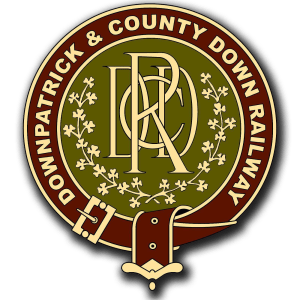| At a glance: | |
|---|---|
| Builder: | Orenstein & Koppel (Berlin, Germany) |
| Build date: | 1934 |
| Original company: | Cómhlucht Siúicre Eireann, Teoranta |
| Withdrawal date: | 1962 |
| Final company: | Cómhlucht Siúicre Eireann, Teoranta |
| Arrived at DCDR: | 1987 |
| Current status: | Stored |
| Current owner: | DCDR |
CSET No. 1 was originally one of nine shunting locomotives built for Cómhlucht Siúicre Eireann, Teoranta (Irish Sugar Company, Ltd.) to work in their sugar beet factories. There were three factories, at Mallow, Thurles and Tuam (a fourth existed at Carlow, which utilised locomotives built by Cockerill & Co) and each received three locomotives. Confusingly, each factory also numbered their locomotives independently of each other, creating three No. 1s, three No. 2s, and three No. 3s!
Our own No. 1, works No. 12475, was assigned to Thurles originally, but the locomotives swapped factories regularly by hitching rides on the back of CIÉ goods trains and it finished its career in the Mallow factory. The locomotives could be distinguished from one another as the factories applied their numbers in different ways – our No. 1 has small brass numbers on the tanks like the other Thurles engines.
Manufactured in Berlin by renowned German locomotive builders Orenstein & Koppel, No. 1 rolled off the production line in 1934 as part of CSET’s first order of six locomotives – the remaining three were ordered and built in 1935. CSET chose O&K due to pressure from the Free State government to avoid conventional British manufacturers because of the ongoing Anglo-Irish trade war. The surplus of beef in Ireland bought about by this debacle meant that the first batch of locomotives were paid for by barter, with two shiploads of cattle sufficing as payment.
No. 1’s appearance certainly doesn’t betray its continental origins, and is instantly recognisable in Ireland thanks to its funnel-shaped chimney (designed to accommodate a spark arrestor), outside valve gear, sanding dome, and unusual combination of side tanks and a well tank. She is of 0-4-0T+WT wheel arrangement and has a top speed of around 30mph. Although No. 1 was originally fitted with both a live steam injector and a mechanical water pump, the latter was found to be temperamental and replaced with another injector during restoration.
No. 1 spent most of its life in Thurles as a shunter, but also spent some time in the late 1950s as a static boiler used to power machinery within the refinery before being withdrawn in 1962. It languished at Thurles factory until 1974, when it was purchased alongside Thurles No. 2 (12476) and Mallow No. 3 (12662) by a Dublin metal dealer on behalf of a private owner who wished to eventually operate them in England.
The trio were moved by rail to Dalkey, but their siding there was soon required for the DART electrification project. It was agreed with CIÉ that the locomotives could be stored at the disused Broadstone bus facility, but this required expensive transportation by road: to facilitate this, Thurles No. 2 was sold to a scrapyard in 1977 so that the other two engines could be moved to Broadstone. Although the scrap company in question recognised the waste in No. 2’s demise and offered it for sale, the engine was eventually scrapped in October 1978.
After many years stored in Dalkey, the locomotives were moved to Broadstone on the other side of Dublin, but unfortunately No. 2 had to be scrapped to pay for their transport. No.’s 1 and 3 ended up at the site of Ballynahinch Junction in 1978, and it was at this point their owner realised they were the wrong gauge for an English railway! As such, they remained in situ until 1987, when the fledgling DCDR purchased the pair and moved them to Downpatrick.
After many years of restoration, including a boiler overhaul at Whitehead, No. 1 finally returned to traffic in 2012 and has been the stalwart of our passenger trains ever since. In a fitting touch of authenticity it currently wears an original O&K headlamp, which once belonged to Tuam No. 1, courtesy of our friends at the Cavan & Leitrim Railway. Our two unique O&K locomotives – thought to be the last ‘full-sized’ examples in the world – continue to keep alive an interesting aspect of our shared history that ended almost six decades ago.
No. 1 was withdrawn from traffic at the end of 2022 due to the expiry of her 10-year boiler ticket, and is currently awaiting overhaul at Downpatrick.
